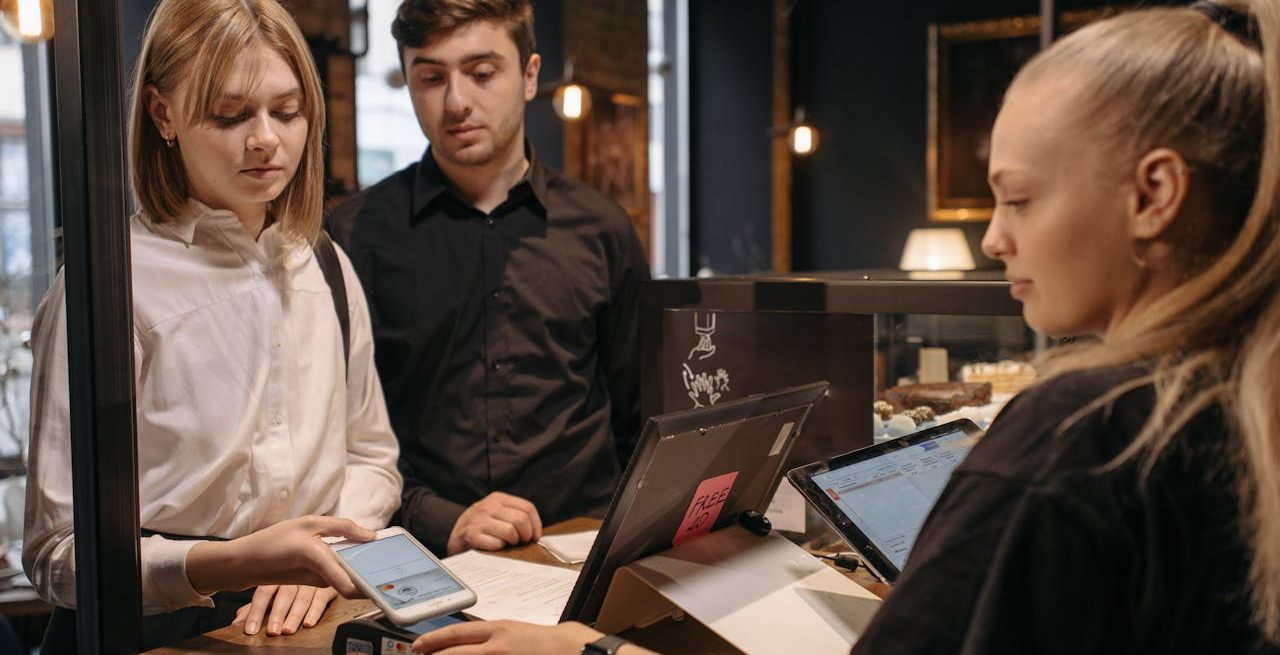Crafting Allergy-Friendly Dining Experiences Using Payment Tech
5 Min Read By Chris Allen
Food allergies in the United States affect an estimated 26 million adults and six million children (10.8 and 8 percent, respectively) and the number of people telling restaurants about their food allergies upfront is increasing. To keep up, restaurants need systems that can quickly check if dishes contain allergens and alert staff. This requires technology that can analyze ingredients against common allergens and instantly inform the kitchen and serving staff.
Customers now want to see what’s in their food and have the option to adjust meals to fit their dietary needs. Restaurants can meet this expectation with modern POS systems that show detailed menu information, including what allergens dishes may contain. These systems need to connect with the kitchen in real-time, updating menus based on available ingredients. This level of detail and flexibility requires a sophisticated approach to managing and presenting data.
Payment Technologies as a Tool for Allergy-Friendly Dining
New payment technologies are reducing the number of possible ‘points of failure’ throughout the process and let restaurants know exactly what their customers can and can't eat right when they order. It's a simple but big step towards ensuring that every meal is safe and enjoyable for everyone.
Contactless ordering lets customers pick their meals without speaking directly to staff, which is great for those with food allergies. They can enter what they can't eat right into the system, which then suggests safe menu items. This tech makes sure the kitchen gets clear instructions, reducing the risk of mistakes. It's secure and updates instantly, so menus always show the latest options and allergy info.
When payment systems and kitchen management tools work together, they share information instantly. When customers pay and note their dietary needs, the kitchen gets an alert. This setup relies on a smooth exchange of information, making sure the kitchen knows about any allergies as orders come in, and it's built to keep working even if there are tech hiccups, ensuring no special instructions are missed.
QR code menus, for example, are a simple but effective solution for diners with allergies. By scanning a code, customers can see which dishes are safe for them and even tailor their orders to avoid allergens. This kind of customization is possible thanks to advanced point-of-sale systems designed with diner needs in mind.
Operational Benefits of Adopting Advanced Payment Solutions
Advanced payment systems make ordering food simpler and more accurate. By letting diners enter their dietary needs right into the system, mistakes go down, making food service safer and more personalized. Kitchens can focus on cooking great food, and servers can concentrate on service rather than on taking detailed orders. It's a big step towards better, faster service and making everyone feel welcome and safe.
Adopting this tech means happier customers and smoother operations for restaurant pros—a smart move in today's competitive dining scene. A personal touch like this can make customers more likely to come back. They know they'll get a meal that suits their exact needs and tastes, making their dining experience uniquely enjoyable.
Data from payment systems is a goldmine for restaurants, revealing which dishes are hits and spotting dining trends. This insight lets restaurants tailor their menus to what customers truly want, keeping things fresh and aligned with changing tastes. Data used right can be an open window to understanding customer behavior and preferences, enabling personalized service and smarter inventory management.
Strategies for Promoting Allergy-Friendly Practices
Restaurants can make their menus friendlier for people with allergies by redesigning the way food is ordered and creating ways for guests to see and choose dishes that meet their dietary needs easily. Sometimes, it can get technical, like connecting the restaurant's ordering system to third-party apps, but it might be worthwhile. This way, any changes to the menu or allergy info get updated everywhere instantly. Setting this up means making sure everything works well together, keeping customer information safe, and ensuring the restaurant can still run smoothly while everything is being set up.
Advertising your restaurant's allergy-friendly options by targeting the right people on social media is usually an approach worth exploring. Do what it takes for your restaurant to show up when people search for allergy-friendly places to eat; send out personalized emails to let existing customers know what you offer. Behind the scenes, it will require some experience and cooperation with your marketing team to interpret the data right and see what's working and what's not, like how many people are clicking on your ads or how many of those clicks turn into actual visits to your restaurant.
Getting customer feedback about their dining experience can now be part of the payment process; it might look like a QR code on a receipt that customers can scan to leave feedback or a simple question about their experience that pops up when they pay with their phone. Technically, this requires setting up a system to collect and look at all the feedback, which could use some smart tech to spot trends and important points in what customers are saying. The biggest challenge is building such a workflow where the feedback is easy to give. Plus, all this needs to be done in a way that keeps customer information private and secure.
Steps to Integrate Allergy-Friendly Practices through Payment Technology
Making your restaurant more welcoming for everyone begins with a thorough review of the technology you currently use. This important first step includes carefully examining everything from your point of sale systems to the digital menus customers see and the software that helps your kitchen run smoothly. The main goal is clear: to find and fix any issues that might prevent important allergen information from being shared effectively. Each piece of your technology acts as a reliable link between what your customers need and what your kitchen can do, keeping the flow of correct information constant and unbroken.
The next step involves carefully picking and setting up the payment and ordering systems that can easily add allergen filters and customization options to the dining experience. Choose technology that works well with what you already have, keeps customer data safe, and lets you update your menus quickly and accurately. Introducing these systems involves detailed testing to make sure everything works perfectly. The goal is to create a place where information about allergens is always up-to-date and easily accessible, making dining safer and more reassuring for everyone.
The last but crucial step is to train your staff to excel in serving customers with dietary restrictions. Create a detailed training program that goes beyond simple tasks like logging in or navigating the menu; dive deep into how to update allergen information, handle special dietary orders, and solve problems as they arise. Truly understanding how to use the technology is important here to protect and enhance the health of your diners. With hands-on simulations and real-life scenarios, your team will gain the necessary knowledge and the confidence to ensure a safe, enjoyable, and welcoming experience for every guest. As your restaurant continues to grow and change, the training will, too, keeping your staff up-to-date and ready to provide the best allergy-friendly service.
Payment technology has changed the game for people with food allergies eating out. It's made ordering food safer and more straightforward by ensuring that a diner's dietary needs are clearly understood and followed. This shows a restaurant's commitment to keeping all customers safe and happy. It's a big step towards making dining out a worry-free experience for everyone.
As food trends keep changing and more people look for meals that fit their health needs, restaurants need to keep up. Payment technology that allows for customization and feedback might be key for some.
Restaurant owners are encouraged to adopt the latest payment tech to improve the dining experience for all customers, especially those with dietary needs. Upgrading to advanced POS systems is a smart move that can make eating out safe and inclusive, proving a restaurant's commitment to customer satisfaction. It's a win-win: better customer service and a boost for the restaurant's image.


